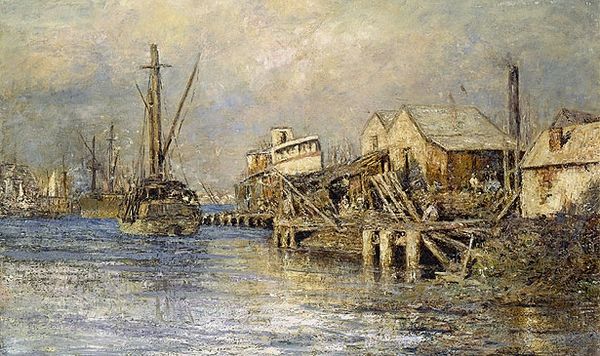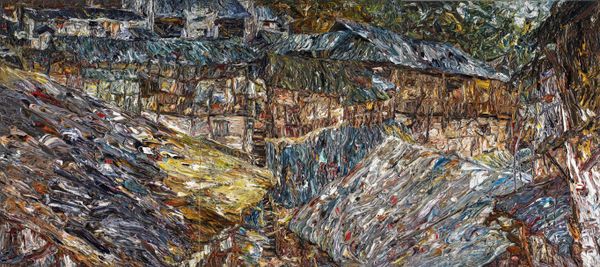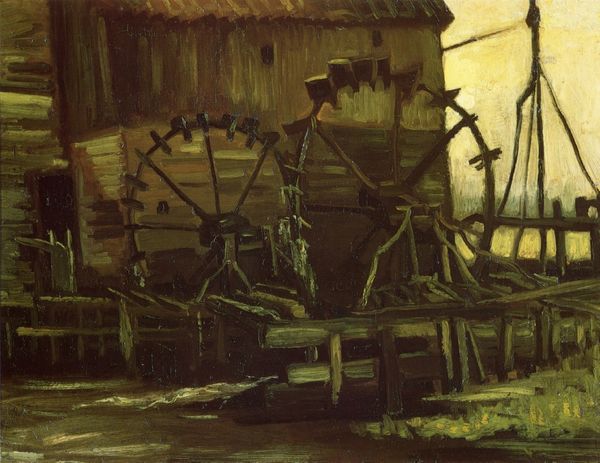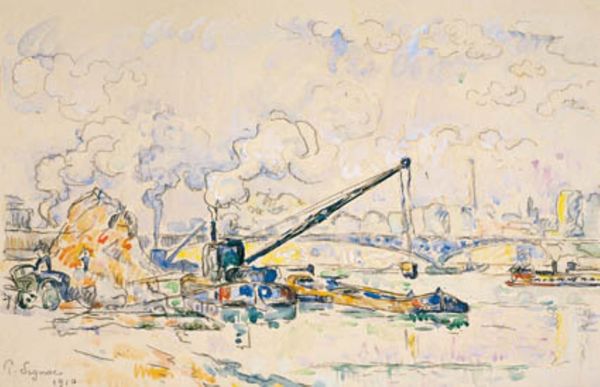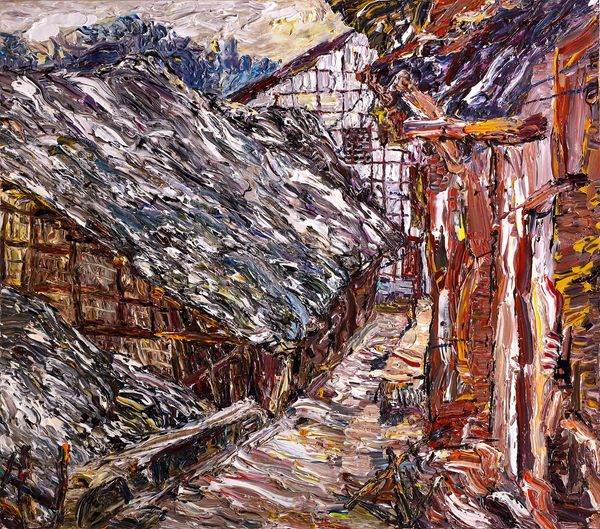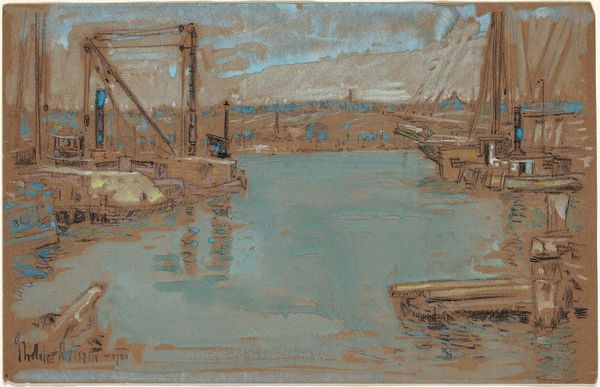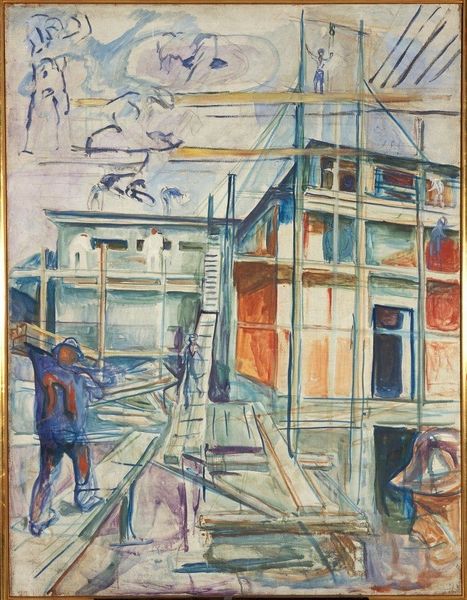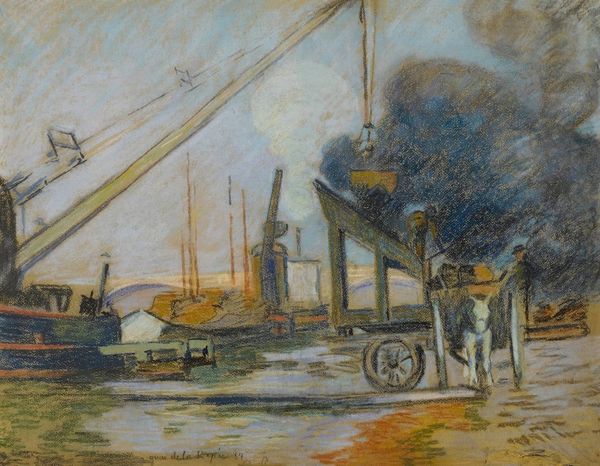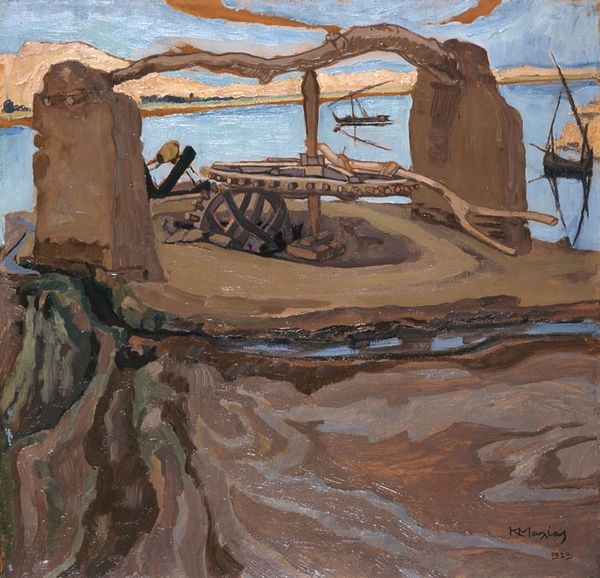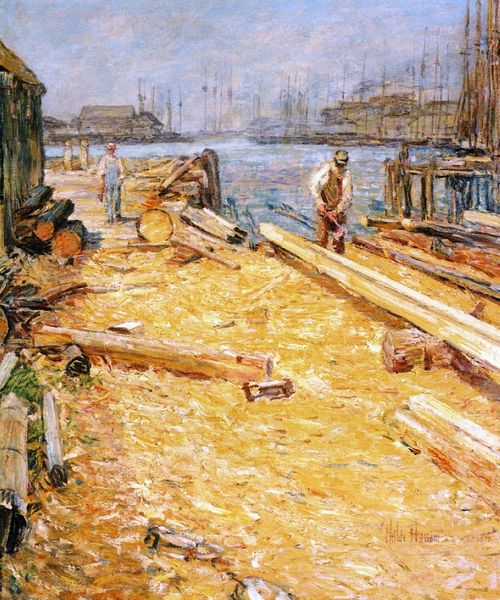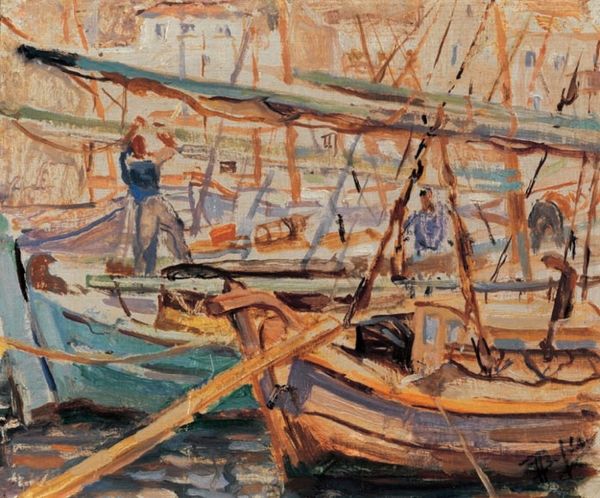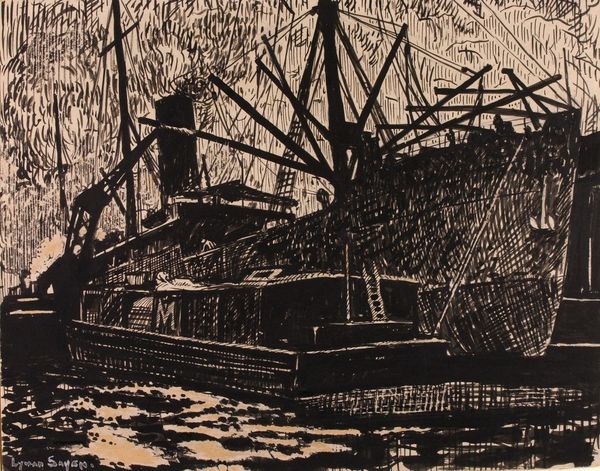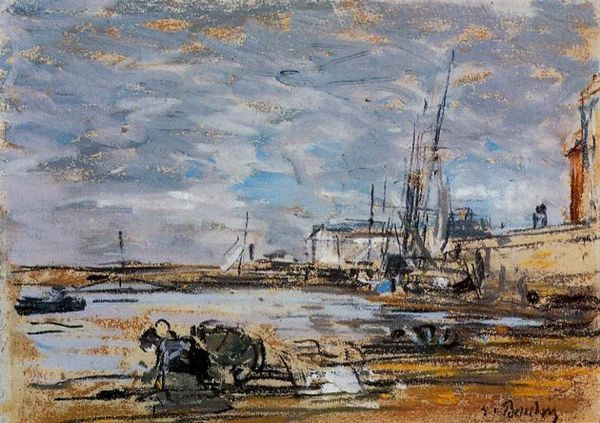
painting, oil-paint, architecture
#
painting
#
oil-paint
#
landscape
#
german-expressionism
#
oil painting
#
expressionism
#
architecture
Copyright: Public domain
Editor: Here we have Egon Schiele’s "The Mill," painted in 1916 using oil. There's something deeply unsettling about it. It’s like this dilapidated structure is barely holding on against the forceful current. How do you interpret this work? Curator: The unease you're sensing is precisely where Schiele’s power lies. Consider the year, 1916. Europe was entrenched in World War I. Could this mill be a metaphor? Is Schiele using this decaying architecture to represent the crumbling societal structures of his time, battered by the forces of war and modernity? Editor: That makes a lot of sense. I didn’t consider the war at all when I first looked at it. The swirling water seems almost violent, like it’s actively trying to tear the mill apart. Curator: Exactly! And think about what a mill represents: industry, production, a source of sustenance and livelihood. Its disrepair speaks to a disruption of these fundamental aspects of life, a society in crisis. Do you think Schiele’s choice of expressionistic style enhances this reading? Editor: Absolutely. The angular lines, the almost brutal brushstrokes—they amplify the feeling of destruction and instability. It's far from a romantic depiction of rural life. Curator: Precisely. Schiele wasn't interested in romanticism; he was dissecting the anxieties of his era. The Mill then becomes not just a landscape, but a powerful indictment of the social and political landscape as well. Editor: This has given me so much to think about – thank you. It is interesting how much the historical context affects our understanding of an artwork. Curator: Indeed. It enriches it and brings so much new insight, doesn't it?
Comments
No comments
Be the first to comment and join the conversation on the ultimate creative platform.
